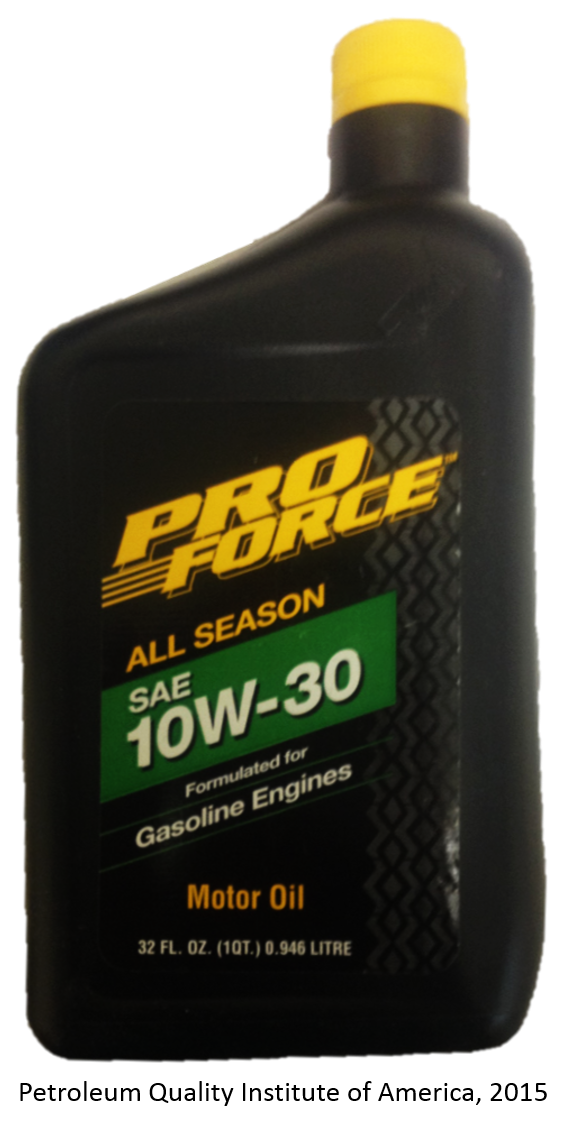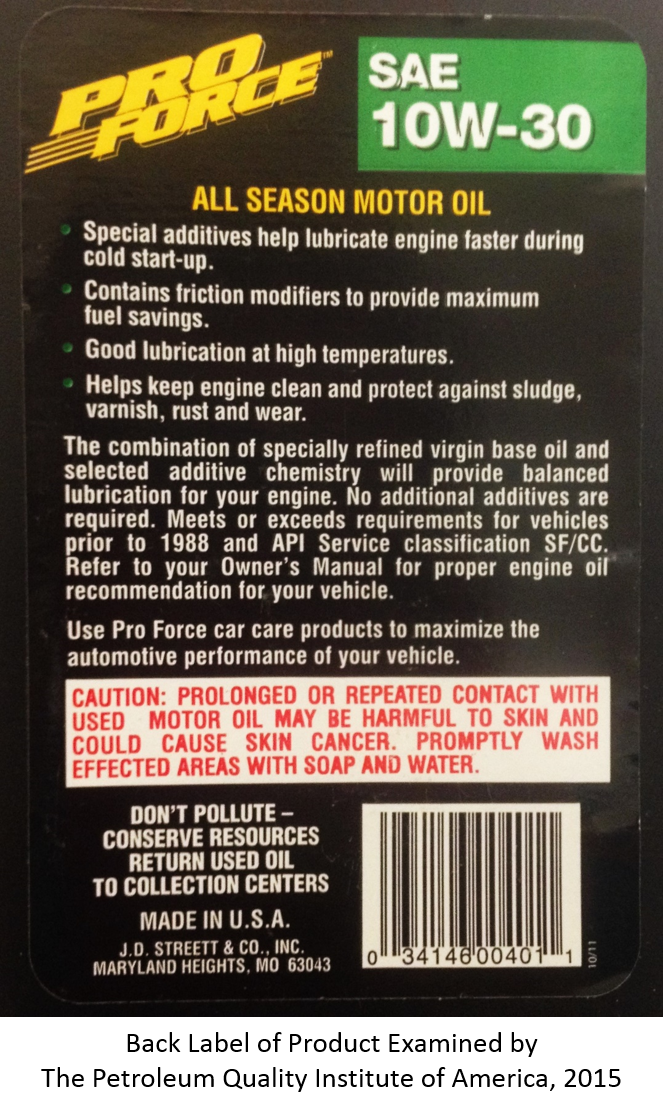

The Data Speak for Itself...

Click above for larger image

Click above for larger image
Corporate Office:
Maryland Heights, MO 63043
Website(s):http://www.jdstreett.com/
The Petroleum Quality Institute of America (PQIA) is an independent resource for information and insights on the quality of lubricants in the marketplace. Our mission is to serve the consumer of lubricants by randomly sampling and independently testing lubricants taken from the field. Test results are posted along with the brand names on the PQIA website. This webpage provides an analysis on the brand detailed below.
The following are the test results for the sample examined.
Marketed by: J.D. Streett & Co., Inc.
Purchased at: Bradley, IL
Date of purchase: 1/5/2015
Website(s): /www.jdstreett.com/
The results of the tests conducted on this sample meet the SAE J300 specifications for the SAE Viscosity Grade listed on the product label, and are consistent with the listed API Service Categories.
BUT... there is more to consider.
Whereas the Pro Force product PQIA tested meets the viscosity requirements for an SAE 10W-30, it is important to understand the language on the back label of this product. To those that take the time read it, they will see the back label states this product "Meets or exceeds requirements for vehicles built prior to 1988, API Service classification SF/CC." That’s right; this product is formulated for use in cars built prior to 1988; cars that were built over 28 years ago and in some states qualify for 'historic" or "antique" registration with the DMV.
This product is rated SF, which is an Obsolete Specification and according to the API is "not suitable for use in most gasoline-powered automotive engines built after 1988. May not provide adequate protection against build-up of engine sludge." See timeline for details.
With that said, read the labels on the oil you purchase to make sure it's the right oil for your car.
 |
Physical Properties |  |
| Elemental Analysis |  |
|
| Labeling |  |
Note: Although laboratory tests alone cannot be used to establish if engine oil meets an API Service Category, they can be used to determine if it doesn't.
| PHYSICAL TESTS (click for test details) - a | Standard | Pro Force |
| TBN, mg KOH/g (ASTM D2896) | 4.5 | |
| Viscosity @ 100ºC, cSt (ASTM D445) | 9.3 to <12.5 | 10.81 |
| Viscosity @40ºC, cSt (ASTM D445) | 70.2 | |
| Viscosity Index (ASTM D2270) | 143 | |
| Viscosity @-25ºC mPa s (cP) (ASTM D5293) | 7,000 Max | 4883 |
| Volatility, mass % loss, 1 hr, @ 250ºC (ASTM D5800) | 15 Max -c | 12.0 |
| ELEMENTAL ANALYSIS (click for test details) - a, b | ||
| Additives | ||
| Calcium | 1538 | |
| Magnesium | 4 | |
| Phosphorus, ppm | 476 | |
| Zinc, ppm | 518 | |
| Molybdenum, ppm | 43 | |
| Barium, ppm | <1 | |
| Boron, ppm | 4 | |
| Silicon, ppm | 9 | |
| Potassium, ppm | <5 | |
| Manganese, ppm | <1 | |
| Titanium, ppm | <1 | |
| Copper, ppm | <1 | |
| Sodium, ppm | <5 | |
| Vanadium, ppm | <1 | |
| Contaminants | ||
| Silver, ppm | <1 | |
| Aluminum, ppm | <1 | |
| Chromium, ppm | <1 | |
| Iron, ppm | <1 | |
| Nickel, ppm | <1 | |
| Lead, ppm | <1 | |
| Antimony, ppm | <1 | |
| Tin, ppm | <1 | |
|
||

